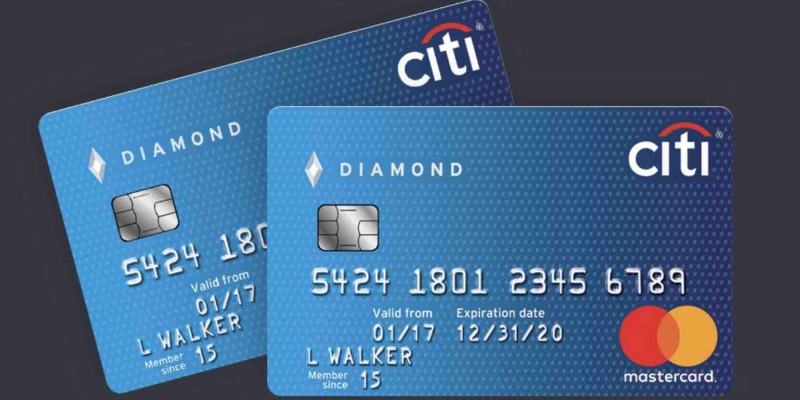
All You Need to Know About C2C and Its Future
Dec 29, 2023 By Susan Kelly
The term “consumer to buyer” or "the customer to customer” refers to a business strategy that promotes private-to-private trade, typically conducted online. C2C businesses serve as go-betweens to encourage interaction and assist customers in reaching wider audiences. This type of e-commerce enables the exchange of products and services between individuals, regardless of the focus of the C2C platform. We'll examine C2C commerce and describe its operational framework.
Customer to Customer (C2C): What Is It?

A business model known as customer-to-client (C2C) allows consumers to transact with one another, usually online. Auctions and classified ads are two examples of C2C market applications. With the advent of the internet and businesses like eBay, Etsy, and Craigslist, the popularity of C2C marketing has skyrocketed.
The Operation of Customer to Consumer (C2C)
Consumer-to-consumer (C2C) refers to a market scenario in which a third-party company or platform facilitates the exchange of goods between two customers. A new kind of business model known as C2C enterprises arose with the advent of e-commerce and the sharing culture.
Consumers gain from product rivalry and frequently discover things that are hard to get elsewhere. Additionally, because there are fewer expenses because there are no merchants or wholesalers involved, margins for sellers may be better than with typical pricing strategies. Because consumers have no requirement to visit a physical store, C2C websites are handy. Online sellers post their goods, and purchasers find them.
Kinds of Businesses that Sell to Customers (C2C)
Craigslist is an online marketplace that links individuals promoting goods, services, or circumstances. In addition to offering a marketplace for goods purchases, sales, and trades, Craigslist also publishes monthly classified advertisements for jobs and real estate. With this platform, the vendor must personally deliver the things to the customer.
Etsy gives business owners the opportunity to design a unique website that they can use to promote their goods to customers. The C2C website provides tools and advice for expanding a business that varies in cost based on the stage of growth of a firm. An additional tool for effectively managing orders, offerings, and customer inquiries is the "Sell on Etsy" app.
There are two categories of product listings on eBay: auction goods and fixed-price products. Buying fixed-price products is as simple as clicking the "Buy It Now" button. Items up for auction have a Place Bid option where you may submit bids and see the current bid price. These goods are out for sale for a set amount of time, after which the highest bidder is said to have "sold" the item.
Revenue and C2C Market Growth
Fees given to sellers for displaying goods for sale, enhancing promotional features, and enabling credit card transactions are how C2C websites and related platforms generate revenue. Typically, secondhand goods are sold in these C2C transactions via an auction or classifieds platform. The future growth of the C2C sector is anticipated due to its affordability. The quantity of goods offered for sale by customers is continuously increasing while the expense of using outside vendors is decreasing.
Because networking websites and other internet platforms are so popular, retailers view it as a crucial component of their business strategy. These channels highlight certain items that customers already own and create demand, which boosts internet traffic to C2C platforms. C2C, however, has issues like no payment assurances or quality control. Credit card transactions are not always supported, although, over time, the rise of PayPal and other similar payment systems has made purchases on C2C platforms easier.
What Distinguishes B2C from C2C?
Business-to-consumer businesses sell directly to customers, whereas consumer-to-consumer platforms assist consumers in selling to other consumers. These days, business-to-consumer (B2C) refers mostly to Internet shops, but conventional retailers, such as mall stores, also use this business model.
The following are some traits of the business model that is B2B:
- Generally, business-to-business (B2B) companies sell a range of goods and services that they either create themselves or acquire from suppliers.
- Businesses that deal with businesses directly to generate revenue.
- B2B businesses need to know what consumers want and ways to get them to buy in order to flourish.
- B2B businesses often have quality control over their products.
- For B2B businesses to succeed and foster client loyalty and repeat business, they must provide exceptional customer service.
What Benefits does the C2C Model Offer?
C2C businesses and participants gain from the business framework in a number of ways.
- C2C is quite inexpensive. C2C systems incur very little expense since they are not required to supply products. As a result, buyers' prices remain lower, and sellers' margins remain bigger.
- C2C is more practical for vendors. C2C platforms offer convenience, which is appreciated by sellers. For instance, the burden of finding possible customers is eliminated for someone who wants to sell an assortment of antique books. Instead, companies may reach a large number of possible purchasers by joining a C2C marketplace.
What Drawbacks does the C2C Model Have?

C2C companies present players with additional difficulties.
- Making payments to credit cards can be difficult. On certain C2C systems, credit card transactions might present challenges. It's possible that some platforms cannot handle or support credit card processing. Nevertheless, solutions like Venmo and PayPal are lessening these difficulties.
- Inadequate quality assurance. Quality control may be lacking in C2C transactions. There is frequently no redress for items that are poorly produced or misrepresented because the sellers are the consumers. Furthermore, it may be challenging to enforce payment guarantees because the purchasers are also customers.
The Bottom Line!
Businesses may now establish C2C markets on a scale never before possible, thanks to the internet. According to consulting firm McKinsey, the pandemic in Europe boosted the C2C trend since so many individuals took the opportunity to get rid of unnecessary belongings. Furthermore, the preference for sustainable products by clients may propel additional C2C growth due to sustainability concerns. One thing to keep in mind is that SMBs typically cannot create a C2C platform because the business plan frequently calls for developing a sizable audience.
-
 Investment Dec 21, 2023
Investment Dec 21, 2023What Is The Nasdaq 100 Index?
Learn the Nasdaq 100 Index and how to invest in it. In this guide, we explain the index's components, its differences from the S and P 500, and frequently asked questions about investing in it.
-
 Mortgages Nov 18, 2023
Mortgages Nov 18, 2023A Guide to First Time Home Buyer Grants Texas and Assistance Programs
Get the best deals from first time home buyer grants Texas by TSAHC and start a new life. Read the article to find out more about different requirements.
-
 Banking Nov 07, 2023
Banking Nov 07, 2023Boost Your Purchasing Power: How to Request a Citi Credit Limit Increase
Ready to boost your purchasing power? Learn how to request a Citi Credit Limit Increase in a few simple steps and get the extra credit you need today!
-
 Mortgages Nov 09, 2023
Mortgages Nov 09, 2023Guide to USDA Construction Loans: All You Need to Know
Set on the journey of building your dream home with confidence with our comprehensive guide to USDA Construction Loans